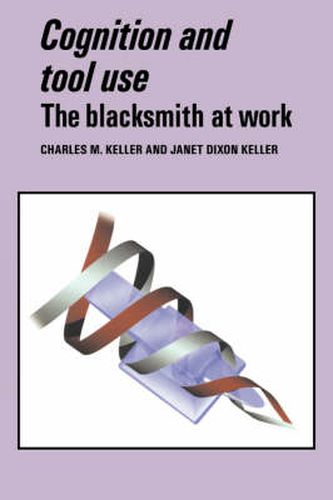Readings Newsletter
Become a Readings Member to make your shopping experience even easier.
Sign in or sign up for free!
You’re not far away from qualifying for FREE standard shipping within Australia
You’ve qualified for FREE standard shipping within Australia
The cart is loading…






In Cognition and Tool Use, anthropologists Janet and Charles Keller provide an account of human accomplishment based on ethnographic study. Blacksmithing, the transformation of glowing iron into artistic and utilitarian products, is the activity they chose to develop a study of situated learning. This domain, permeated by visual imagery and physical virtuosity rather than verbal logic, appears antithetical to the usual realms of cognitive study. For this reason, it provides a new entree to human thought and an empirical test for an anthropology of knowledge. How does a mind in practice approach a stable, ‘sedimented’ body of knowledge and create something truly original? What does human tool use say about human thought? What does someone need to know to successfully produce a material artifact and how do they learn it? In addressing these questions, the authors offer an interdisciplinary perspective on the principled creativity of human behaviour.
$9.00 standard shipping within Australia
FREE standard shipping within Australia for orders over $100.00
Express & International shipping calculated at checkout
In Cognition and Tool Use, anthropologists Janet and Charles Keller provide an account of human accomplishment based on ethnographic study. Blacksmithing, the transformation of glowing iron into artistic and utilitarian products, is the activity they chose to develop a study of situated learning. This domain, permeated by visual imagery and physical virtuosity rather than verbal logic, appears antithetical to the usual realms of cognitive study. For this reason, it provides a new entree to human thought and an empirical test for an anthropology of knowledge. How does a mind in practice approach a stable, ‘sedimented’ body of knowledge and create something truly original? What does human tool use say about human thought? What does someone need to know to successfully produce a material artifact and how do they learn it? In addressing these questions, the authors offer an interdisciplinary perspective on the principled creativity of human behaviour.